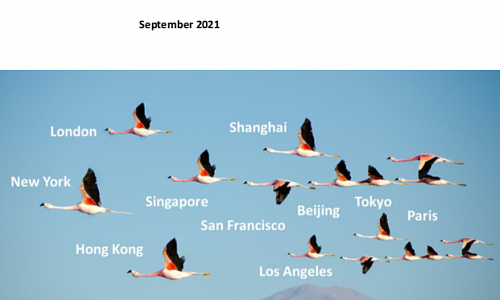Promotion of sustainable financing for the Belt and Road Initiative

Author: Guo Wanda, Executive Vice President of China Development Institute
What is Sustainable Financing
Sustainable financing refers to financing activities taking account of sustainable development criteria. It forms a financial development model that considers the coordination of humanity, society, economy and environment, and guides financial resources’ flow to more inclusive and sustainable areas.
The UN Environment first published a report in October 2015, entitled ‘Building a sustainable financial system’, which extends the field of sustainable financing to public debt, society and governance. This was further explored in November 2017, when the UN Environment and the World Bank jointly published the ’Roadmap for a Sustainable Financial System', which demonstrated how financial industries can play a different role in contemporary society by practicing sustainable financing, and engaging in social responsibilities. This report also suggests that financial technology has the potential to protect environment, and support sustainable development finance.
In February 2018, the G20 convened its Sustainable Finance Study Group (SFSG) in London. The SFSG focused on green finance as the core of their study, and also included sustainable development factors such as financial supports for disadvantaged groups, innovation and entrepreneurship, income distribution and SME development to the scope of study.
Why ‘Belt and Road Initiative’ needs sustainable financing?
Financing is essential for the Belt and Road Initiative (BRI). Based on the capital and financial needs of the BRI, a diversified, inclusive and sustainable BRI financing system has been initially established.
To enable this, the construction of diversified financing network has taken shape. The sizeable BRI financing network covers development finance, financial policy, multilateral development institutions and capital markets.
In addition, the sustainable financing policy has formed an initial framework, which has allowed a series of sustainable financing policies to take shape, and has been introduced by China and BRI countries. Some of these policies include ‘Guiding Principles on Financing the Development of BRI’, ‘A Framework to Assess Sustainability and Financial Risks under the BRI’, ‘Regulatory Commission Guidance Opinions on the Standardization of the Banking Sector’s Provision of Service to Enterprises Expanding abroad and the Strengthening of Risk Prevention and Control’ and ‘Environmental Risk Management Initiative for China's Overseas Investment’.
Moreover, sustainable financing activities are increasingly enriching, and innovative financial products and services are widely applied in the BRI countries by issuing different types of bonds; such as green ‘Belt and Road’ interbank normalization cooperative bond, green financial bond and non-sovereign secured debts.
How to promote sustainable financing for ‘Belt and Road Initiative’?
It is recommended establishing a BRI multilateral financial institution, from which lessons can be drawn within international organisations like the World Bank, the International Monetary Fund and the International Finance Corporation. The multilateral financial institution will be led by the BRI countries and will be dedicated for their financing.
More specifically, the organisations within BRI institutions will focus on some key factors; they will create and improve the sustainable financing regulation based on the BRI countries’ general agreement, they will facilitate the mandatory use of relevant sustainable financing regulations for BRI’s bilateral or multilateral financing, and will formulate the BRI sovereign debt relief mechanism, so as to cope the debt default problems involved in the BRI investment and financing. Furthermore, incorporating these mandatory sustainable financial regulations will strengthen the policy coordination among BRI countries, in areas of law, taxation, trade, investment, financial supervision and accounting standard. Thus, a transparent and non-discriminatory financing environment as well as a fair, efficient and stable financial infrastructure can be created.








